Episode 195
What you’ll learn in this episode:
- Why Charon cares more about quality of content than whether something is defined as art, jewelry or craft
- Why social pressures can make it difficult for people, especially men, to wear art jewelry, and how education can change that
- Why so many people choose to spend money on traditional jewelry, even if they are intrigued by an art jewelry piece
- Why Charon believes every artist has a uniqueness that can be developed
- How the relationship between artist and gallery is changing
About Charon Kransen
Charon Kransen established Charon Kransen Arts in New York City in 1993, in order to promote exciting jewelry from around the world in North America. The work is presented annually at various American art fairs, such as SOFA New York, SOFA Chicago, SOFA Santa Fe and Art Palm Beach and the Int. Art and Design Fair in New York and at select galleries specializing in contemporary crafts and design.
As a private dealer, Charon Kransen Arts welcomes individuals, collectors and museums to the Upper West Side of Manhattan.
The collection consists of jewelry, hollowware and accessories by both renowned and emerging artists, whose work may be found in museum and private collections around the world.
The focus is on the artists’ personal vision and on an innovative approach, characterized by the use of a wide spectrum of materials from paper to precious.
The educational branch of Charon Kransen Arts includes lectures and seminars throughout the USA, Europe, Australia and South America and the distribution of books and exhibition catalogs on all aspects of jewelry, metal and design
Additional Resources:
- Website: www.charonkransenarts.com
Photos:
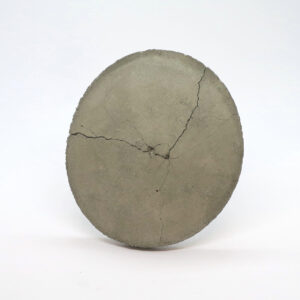
brooch Tamara Marbi Joka Norway, winner Herbert Hofmann Prize 2023
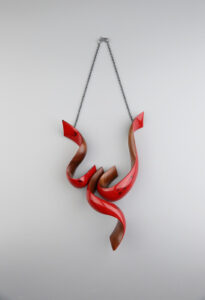
Image 1- Necklace Joo Hyung Park S. Korea
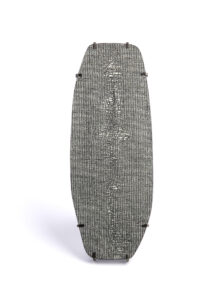
brooch Roberta Consalvo Sances Italy
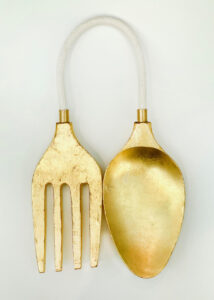
Necklace Hungry Elin Flognman Sweden
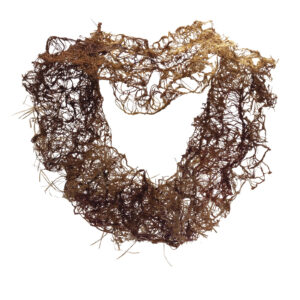
Necklace Wetlands, Mabel Pena Argentina, finalist Loewe Foundation Craft Prize 2023
Transcript:
It takes a certain type of person to appreciate art jewelry, and it’s even rarer for someone to wear it unabashedly. Charon Kransen proudly considers himself the latter. As the founder of Charon Kransen Arts, he is a gallerist and educator who hopes that more people embrace and express their differences through jewelry. He joined the Jewelry Journey Podcast to talk about the challenges that galleries are facing today; why people wrongly assume that traditional jewelry is a better investment; and how education can help people find the confidence to wear art jewelry. Read the episode transcript here.
Sharon: Hello, everyone. Welcome to the Jewelry Journey Podcast. This is the second part of a two-part episode. If you haven’t heard part one, please head to The JewelryJourney.com.
My guest today is Charon Kransen, and he’s truly a man of the art jewelry world. He studied in several countries and speaks several languages, and he teaches and lectures about art jewelry globally. Welcome back.
I was rereading the transcript from last time, and you had described this market as being somewhat elitist. I was surprised to reread that. I think of it as more of a mass market thing because it’s more affordable and you can change it more.
Charon: What I mean by elitist is, in general, you have to have a certain sophistication. You have to have educated yourself. You have to have a certain courage. You have to have a certain emotional intelligence to be able to appreciate this work and look at it not like—what do people say?—“This is different.” That’s what I mean by elitist. Most people couldn’t care less. In general, they want to wear something really small; you barely see it. I don’t mean elitist in a pretentious way, but yes, you have to have a level of sophistication in order to appreciate it, right?
Sharon: Yes, if you want to think of elitism being that. There is only a certain segment of a population that’s going to understand it or even stop to think about it for a minute.
Charon: For many years, I’ve done the art fairs in Florida in Palm Beach, and I was the only contemporary jewelry dealer in that fair. There was a lot of high-end jewelry and estate jewelry, and so many times I heard people walking into my booth saying, “Oh, this is so inspiring. This is so refreshing,” and then I saw them across the aisle buying something high end and very expensive because that is, in the end, where their decision lies. “Oh, this is too much fun. I’d better put my money in something that is made of precious metal,” or whatever. I’ve seen that happen so many times. That is what gives people the kind of certainty that they’re not throwing their money away by buying something very out of the ordinary. This is generalizing, of course, but I’ve seen that for so many years. That’s just the reality of this field.
Sharon: Do you think that it is trending toward the lighter, the more fun, the jewelry that’s interchangeable, or that you can afford to have some choices?
Charon: I think it brings up the issue of listening more closely to who you are, what your mood is. If you want to use the word fun, it’s how to embrace fun in your life and not try to be somebody who, from the outside, is all together and all blah, blah, whatever. Yeah, it brings a certain lightness and a certain freshness and a certain leaving your comfort zone energy.
Sharon: Has the way you’ve sold this jewelry, your jewelry, changed over the years? Have you emphasized the lightness of it or the affordability or anything because something changed?
Charon: There are definitely people—and I’m not just talking about since the pandemic, but even before that—who’d say, “Charon, you need to sell more traditional jewelry, more commercial jewelry, more low end,” meaning very low end. I thought about it many times, but that is not something that has my passion. That’s just not the kind of work I want to present. In the end, I have to live with me; I have to be surrounded by work that I find inspiring and energetic. You’ve known me long enough that I have always shown work that, for a large part, is very colorful. The format of certain jewelry might be a bit traditional sometimes, but in terms of color and material and content, this is the kind of work I want to represent. It’s pretty obvious.
Sharon: Can something that’s made out of a material you’ve seen before and thought was innovative, and now you see it in a different format, can that be considered innovative, or is it only the first time?
Charon: Essentially what I think makes a work innovative has a lot to do with a certain uniqueness. When I lecture or do seminars, I talk a lot about what it is that makes a piece of jewelry so special and unique. I think that is something that has a lot to do with how you as a maker infuse your uniqueness into this piece. It could be how you infuse it by manipulating a certain material, but in a way only you can do. I really believe deep down that everybody has a uniqueness. It might be totally underdeveloped, but I do believe people have that. That, to me, is what makes a work unique and even innovative. It’s a combination.
Maybe the best way to describe it is this. I get packages for artists, several every week, and you open a package and think, “O.K., Charon, in all the years you’ve seen it all. You’re probably a bit jaded.” Then I open it and I jump, like, “Wow! I thought I had seen all of it.” In many ways, my opinion is often the thing that needs to be developed more than anything. You can call it the voice of an artist. That makes me jump, like, “I thought I’d seen it all. Wow!” It’s seeing something I’ve never seen before, and I don’t even know how to describe it. It’s not about analyzing how it’s made, but more of the energy that it expresses. It’s interesting that after all these years, I can still have that sensation. It just is what it is.
Sharon: I’m surprised. Is there anything left that would surprise you? That’s my thought.
Charon: Absolutely, yeah.
Sharon: Yes?
Charon: The mind is endless. There is no limit to the mind, and people come up with things. That’s why I’m still doing what I’m doing. I’m far from retiring.
Sharon: How did you make it through Covid? Did that affect your business?
Charon: It was basically dead the first half-year, and then—you’re talking to somebody who in many ways is kind of old-fashioned. I’ve never done social media. I’ve developed clientele on a very personal level. But this time, it was just horrendous. I kept thinking, “Well, no art fairs. Galleries are closed. No exhibitions, no nothing. How are these artists going to survive?” I’m part of the system that pays them money so they can live and work. So, I forced myself to start with Instagram, which was a big stretch for me because I don’t really like it.
Then I approached a lot of people describing the situation, how it really is for artists. I wasn’t that concerned about my own survival, but I thought about all these artists who do not have any income. How can I expect them to be motivated to sit in their studios and make work and say, “O.K., this is difficult and challenging situation. We just have to sit it out”? I felt a lot of their financial pressure, their stress. I approached so many people for help understanding the situation, and of course offering them a bigger discount so I would be able to send checks to artists. Many wonderful, loyal people responded.
I would say it’s still kind of problematic because to develop new clients, you have to do the art fairs, but the art fairs are extremely expensive. You end up paying so much for the whole thing. Financially, I really question whether that is still the way to go, especially in jewelry. When you do these fairs and see artwork, sculptures and paintings that sell for $100,000, yeah, O.K. We’re talking jewelry here. What is the price range? You have to sell a shitload of work in order to break even. So, I’m rethinking that whole art fair model. Everybody also says the market has changed big time. The 90s and the early 2000s, they were golden years. It’s amazing what people would spend. That has changed big time. I hear it from other colleagues also, not even in our field, but in other fields, too.
Sharon: There have been a lot of changes, yes. I can see that in what people buy and how much they’re willing to spend.
Charon: We’re talking here about work that is worn on the body. When you just look at images, you miss the three dimensionality. You can’t imagine it, really. You miss the tactile aspect, the sound aspect. We’re constantly looking at two-dimensional images, and not everybody is able to translate that. I’m trained as an artist so I can do that, but most people can’t. It’s different than looking at an object. How is this going to be on my body? That is a big issue. If you look at commercial jewelry that’s sold over the internet, it’s simple; it’s accessible; it’s understandable; you can totally figure it out, but this kind of work is a completely different story.
Sharon: That’s true.
Charon: That is where we are. We’re looking at images. I send things on approval because I want people to see them and try them on. With this kind of jewelry, I think it’s very difficult to sell on the internet. I really do.
Sharon: I think you’re right. When I think of the images I see when I’m scrolling through Instagram, most of them are things you don’t have to imagine. You know how it’s going to look.
Charon: Right.
Sharon: In your mind, do you have some art fairs you think you’ll still go to that are reasonably priced?
Charon: None of them are reasonably priced. I had several meetings with the director of SOFA Chicago. SOFA Chicago is not happening again this year, and they’re rethinking the whole idea. We’ve been talking about a much smaller fair with exquisite objects. When I think of SOFA Chicago as it was at Navy Pier—
Sharon: SOFA being Sculpture, Objects, Functional Art and Design?
Charon: Yeah, it’s huge. People go there to be entertained without any intention of buying anything. I think there is definitely a market for people who are interested in exquisite objects in glass, in wood, in ceramic jewelry and textiles that would attract them. I might be talking to them about developing something in that different format. I think that would totally work. Right now, I’m focusing on New York Jewelry Week. I’m going to do something I’ve wanted to do for a long time but never did, and I’m very excited about it.
Sharon: I hope to be there. I think that’s the place if you want to experiment.
Charon: I’ve now had two years to focus on the Far East with five or six countries, Korea, Japan, China, Taiwan, Thailand—what am I missing? That was great because this is the aesthetic we mostly don’t see.
Sharon: We don’t.
Charon: It was great, but it was a lot of work for us. I showed the work of like 45 artists. Anyway, I have a theme in mind, and I think it could be great.
Sharon: I’ll keep my eyes open. I’ll wait for round three until after New York Jewelry Week, and I’ll ask you what you’ve done next year post-Covid. I think everybody is changing the way they operate with Covid.
Charon: Quite frankly, I think we’re all in survival mode and reinventing ourselves, and we’re understanding also that somehow it has to make sense. Many years ago, I heard this term which was new to me, “I need to spend money in order to make it.” But the past three years have been horrendous, and not just for me but for so many people, I think. But I’m still here; I’m still getting excited about it.
I am involved in something that unfortunately I cannot quite talk about. Well, I can say this much: I was invited to be a judge of a major international competition. It’s interesting to go through all these submissions and see where we are as a field. This is not just jewelry. There are so many artists. I remember in one of your questions you sent me, you wrote something about education, like “Who needs to be educated most?” I might get a lot of reaction to this, but I think artists need to be educated mostly.
Sharon: On what will sell?
Charon: No, most artists are incredible. They’re talented in what they make, but once the work leaves the studio, there’s a whole world out there that is foreign to them. I think especially during the pandemic, artists started to sell themselves individually, whether they had a relationship with a gallery or not. It is a problem. It’s an issue, but what do you do as an artist when you’re desperate financially and you can barely survive? It brings up a lot of new issues. I won’t bore you with examples, but there are lots of examples where I feel like, “Well, maybe galleries are obsolete. Maybe the relationship between artist and gallery is changing because everybody has been going through a very difficult time.” It’s going to be interesting to see how that continues, but it does bring up a lot of issues and a lot of problems.
Sharon: When that’s developed more, that’s something I’d like to talk with you about. It sounds very interesting. Thank you for being with us today. I look forward to the next time.
Charon: When we meet.
Sharon: It was great. Thank you for being here.
Charon: Thank you for the invitation, and like I said, to be continued. Thank you for having me.
Sharon: We will have photos posted on the website. Please head to TheJewelryJourney.com to check them out.
Thank you again for listening. Please leave us a rating and review so we can help others start their own jewelry journey.

